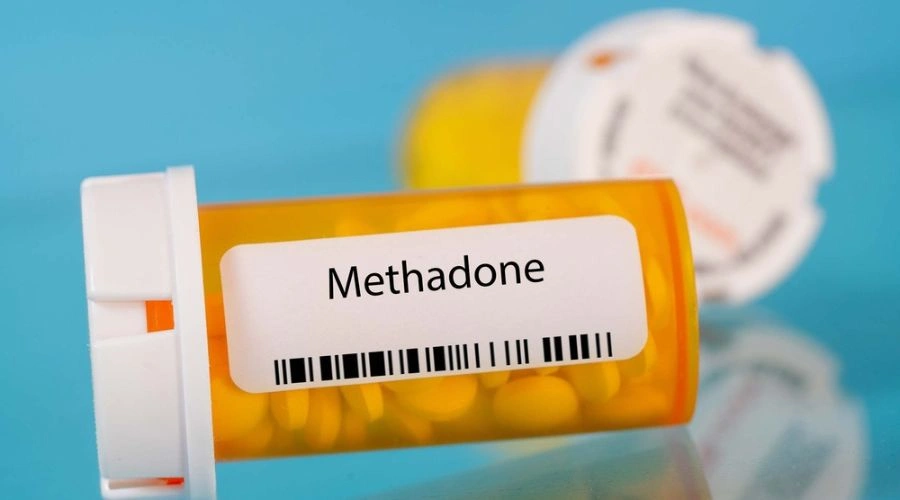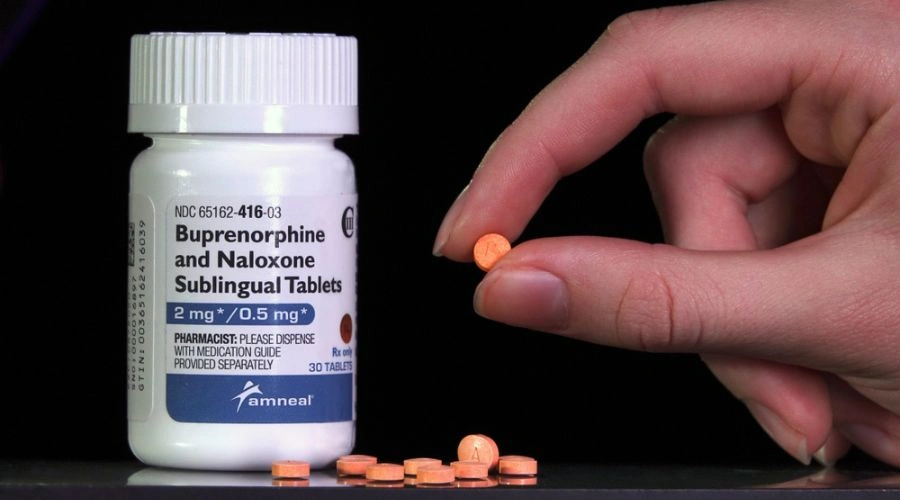Overcoming Methadone Withdrawal Through Effective Approaches
Methadone is a medication used to treat opioid use disorders. It is one of a few medications utilized i medication-assisted treatment. Patients will switch from using a short-acting opioid like heroin or fentanyl to a longer-acting opioid like methadone or buprenorphine.
By switching to a long-acting opioid like methadone, you avoid the withdrawals and only need to take opioids once a day. This will allow you to live a much more stable and productive life, not having to constantly be looking for the next fix to avoid being violently ill.
Methadone is also extremely addictive, and sometimes people will continue to take the medication for the rest of their lives. Although this is a much better option than being on heroin or fentanyl, being able to be off of everything is going to be the healthiest option with the least side effects. However, methadone therapy can last a lifetime.
Ideally, however, the person receiving methadone or Suboxone should taper down on the medication and eventually get off. Eventually, being substance-free should be the goal of anyone utilizing methadone treatment programs.
This is likely why you arrive at our resource while searching for answers to the crucial question: “How can I get off methadone?”
In this blog, I will explain the benefits and possible drawbacks of medication-assisted treatment, the differences between methadone treatment, buprenorphine treatment, and other opioids, and some strategies for getting through methadone withdrawal symptoms.
The main point to remember is that a medical detox like the one offered at South Shores Detox will provide you with the best chance of getting off methadone.
Safely and Effectively Quit Methadone With Support from South Shores Detox
Medical supervision is important when getting off opioids, specifically because the withdrawal symptoms can be extreme. At South Shores Detox, we offer a medical detox so that you can safely and effectively get off of methadone, buprenorphine, or any other opioids you may be struggling to quit.
South Shores also offers inpatient treatment programs for other medications and drugs, including methamphetamine, benzodiazepines, heroin, fentanyl, and many more. Anything hindering your progression into a healthy life can be addressed at South Shores Detox.
How Can I Get Off Methadone? Other Options for Medication-Assisted Treatment Support
Opioid addiction is a complicated diagnosis and requires a hybrid approach to treat effectively. The relapse rate among those who have recently stopped using is extremely high. There are acute withdrawal symptoms and post-acute withdrawal symptoms.
How Effective are MAT Programs vs Abstinence Treatment Programs
By switching an afflicted person from heroin or fentanyl to a long-acting opioid like methadone or buprenorphine, it greatly reduces the likelihood they will relapse compared to someone who is completely abstinent.
According to a study on the National Institute of Health website, medication-assisted treatment programs have a much higher success rate than abstinence-based treatment programs for opioid use disorders.
This study would lead you to believe that doing a medication-assisted treatment program would be the way to go when deciding which treatment is right for your opioid use disorder. However, there are other nuanced facts to keep in mind when it comes to opioid use disorder, especially when considering the withdrawal symptoms.
The Downsides of Medication-Assisted Treatment Programs
The biggest and most glaring argument against methadone treatment programs is the fact that methadone itself is an opioid, and a powerful one at that. Some patients tend to continue methadone indefinitely for the rest of their lives because getting off methadone is considered harder than getting off shorter-acting illicit substances like heroin or fentanyl.
The reason it is so difficult to quit is that methadone withdrawal symptoms are so intense and last for such a long time. The half-life of methadone, or the amount of time it takes for the medication to stop working after it is ingested, is much longer than other opioids.
The pain methadone withdrawal symptoms cause is also much more pronounced than other opioids. Muscle aches and pain in the skeletal system are intense and long-lasting when you quit methadone. These intense withdrawal symptoms can last four to six weeks, and those are just the acute withdrawal symptoms.
Post-Acute Withdrawal Symptoms
Post-acute withdrawal symptoms last another year or sometimes two after stopping methadone. This drawn-out process, while knowing that relief is one dose away, can make the prospect of quitting cold turkey seem impossible.
Post-acute withdrawal symptoms have been long studied in addiction medicine, and the reality is that without continued participation in treatment programs, many people end up relapsing. Opioid cravings, depression, anxiety, and anhedonia are all examples of post-acute withdrawal symptoms.
Tapering off methadone can mitigate the acute withdrawal symptoms to a certain degree, but often does nothing to help with post-acute symptoms. Methadone causes severe withdrawal symptoms and will greatly affect your quality of life.
How Methadone and Buprenorphine Therapy is Utilized
Another point of discussion is deciding who is right for these treatment programs. There are many factors to consider when understanding whether methadone maintenance treatment is the correct option for you.
In this next section, you will learn the differences between buprenorphine and methadone, which patient profiles make the most sense for these treatments, and whether or not you should consider either.
The Differences Between Methadone and Buprenorphine
Methadone and buprenorphine are the two long-acting opioids prescribed to those with an opioid use disorder as replacement therapies. Both are very similar in what they do in the brain and are often used interchangeably, with a few differences.
Methadone is a full opioid agonist. This means that in the brain, methadone connects to the opioid receptors and fully activates them. Buprenorphine, on the other hand, is a partial antagonist and, partial agonist. This means that buprenorphine binds to the receptors in the brain and partially activates them and partially shuts them down.
Theoretically, this means that methadone is going to provide better pain relief, be slightly harder to get off of, and be more euphoric. However, anecdotally, both provide similar euphoria and pain relief. It is generally agreed upon that methadone is, however, much harder to get off of and has more severe withdrawal symptoms.
Another difference between the two is that methadone can be taken before the withdrawal from the other opioids begins to take effect. Buprenorphine, on the other hand, cannot be taken until the other opioids are fully out of your system and withdrawals have fully begun. If buprenorphine is taken too soon, it will make a person extremely sick.
When to Choose Methadone over Buprenorphine
Clinicians are in general agreement that buprenorphine is a better option than methadone unless a patient is continuing to be unsuccessful with this treatment. After unsuccessful attempts at recovery on buprenorphine, methadone should be considered as an option.
Buprenorphine is also chosen over methadone during withdrawal management. Often, a person will only take opioid replacement medications for about a week and then discontinue use to get through the intense withdrawal symptoms without becoming dependent on the buprenorphine.
This strategy is much different than replacement therapy, where you will have a daily maintenance dose for often years after the illicit opioid has been stopped.
Either methadone or buprenorphine can be used for maintenance. Your doctor can help you make this decision. Stopping methadone or buprenorphine after a month or more of continued use will cause some severe symptoms. Making this decision should not be taken lightly.
Who is a Candidate for Opioid Replacement Therapy?
Often, a medical provider will consider a few different aspects of a patient’s history before recommending a methadone clinic. Usually, these options are reserved for those with a history of relapse, overdose, or other severe symptoms associated with late-stage opioid use disorder. There are always exceptions, but these are general guidelines.
Typically, MAT services aren’t recommended to younger clients. When someone is still in the early stages of opioid dependence, using Suboxone for a short period during the detox process can be used to avoid uncomfortable withdrawal symptoms.
However, immediately tapering down and getting off the Suboxone within a week is recommended so that the person does not have to then face the withdrawal symptoms of the buprenorphine. Going on maintenance of either methadone or Suboxone is a huge decision, and if it can be avoided, it should be.
MAT Service Needs are at an All-Time High
Fentanyl has nearly completely replaced heroin. With the increased risk of overdose due to the prevalence of fentanyl, the need for alternative treatments is at an all-time high. The opioid epidemic has devastated our communities and destroyed lives. Methadone prescribing guidelines have loosened a bit because of the increased risk of death if a person continues to use street opioids.
As stated before, choosing to go on methadone or Suboxone maintenance should not be taken lightly. The withdrawal from methadone is substantially longer than other opioids, and can be much more painful as well. Suboxone withdrawals aren’t as intense as methadone withdrawal symptoms, but will last just as long.
Considering All Possibilities when Deciding on MAT
Considering all these factors is important when weighing them against the dangers of fentanyl. Abstinence is the best scenario, but staying alive on MAT until you are ready to be completely sober is a whole lot better than overdosing when you relapse on fentanyl.
Looking at the lesser of the evils is something you may have to do in order to survive.
Looking at Issues With How Methadone is Typically Dispensed
Most doctors are not able to prescribe methadone; to receive the treatment, you have to enroll at a methadone clinic. Clinical guidelines state that you must attend every day to get your daily dose. Take-home doses are not provided until you have spent months abiding by the program’s rules and providing clean urine tests. The length of time until take-home homes are given out will vary from clinic to clinic.
After getting to the point where you are receiving take home doses, they can be taken away if you provide a positive urine drug screen. 28 is typically the maximum number of take home doses provided by a clinic.
Getting to this point typically takes over a year of building trust with the methadone clinic. There are rare exceptions to get take home doses sooner, but these are federally mandated guidelines that must be followed.
Methadone Dose Reductions and the Realities of a Methadone Taper
When signing up for a methadone clinic, you will first meet with a doctor who will assess your symptoms and determine how many milligrams to start you on. After this initial prescription, rules vary slightly, but generally you can adjust your dose by 3-7 milligrams every 3 days. This requires meeting with a counselor to determine if there is a need for a dose reduction or increase. In order to change the dose more than that at one time, you must meet with the doctor again.
Once you are at a stable holding dose, meaning you do not experience withdrawal symptoms in between doses, you can begin to focus on improving all the other areas of your life. Optimally, you should treat the methadone as any other medication, try not to treat it like getting a fix, but rather begin to focus on improving your life.
Some time down the road, you may begin to consider getting off methadone. In order to avoid methadone withdrawal symptoms, you must plan your titration downward. Going down 10% a month or so will minimize the withdrawal symptoms felt. It’s a long and challenging process that can cause many people to relapse if not done right.
Getting Off Methadone is Made Easier at South Shores Detox
The safest option when getting off methadone is going to a medical detox facility. Titrating with a methadone clinic may take years, depending on what dose you are on.
If you are struggling, wanting to finally lose the ball and chain that is methadone maintenance treatment, give South Shores Detox a call. A caring and supportive staff will guide you through the intake process and get you into a much better position to quit methadone.
Don’t wait, end the daily dosing and constant fatigue from always being on an opioid. Get into a safe place when the uncomfortable withdrawal symptoms occur. Welcoming staff are waiting to take your call. Reach out confidentially and get help today.





